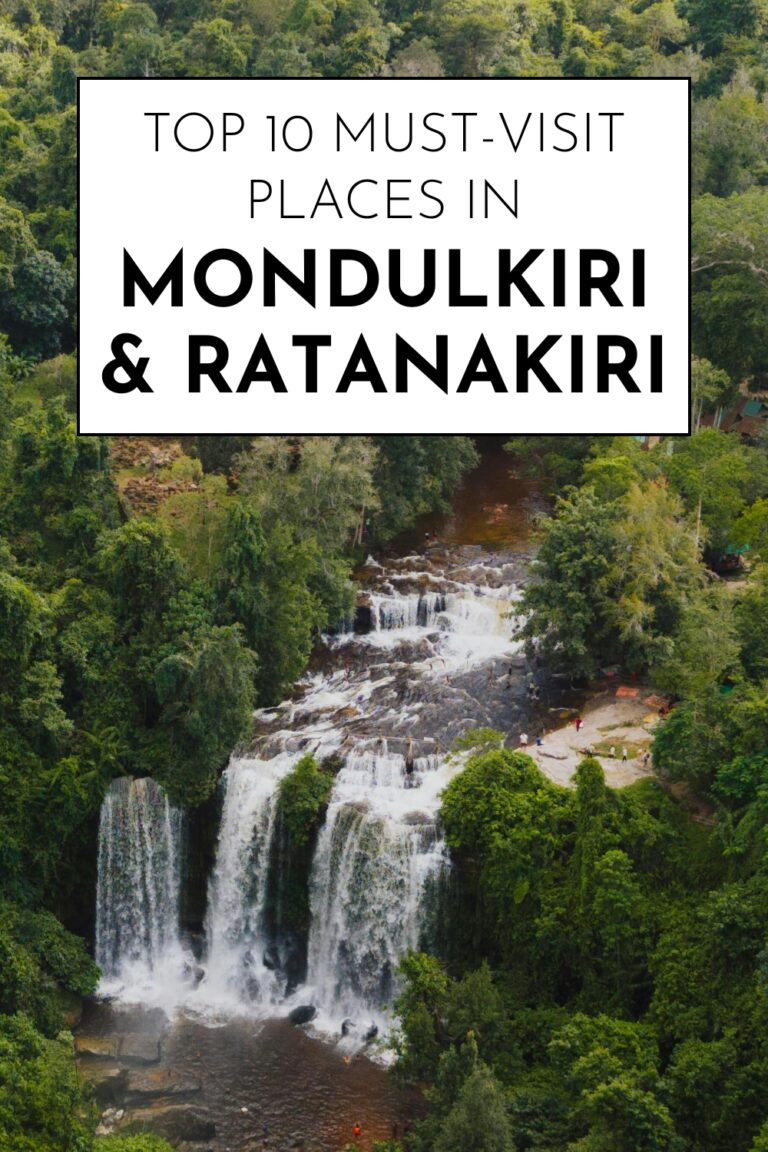Tucked away in Cambodia’s remote northeastern provinces, Mondulkiri and Ratanakiri offer an extraordinary escape into pristine wilderness and authentic highland culture. These two provinces, often called Cambodia’s “Wild East,” remain largely untouched by mass tourism, providing intrepid travelers with genuine adventures and unforgettable encounters with nature.
Mondulkiri, meaning “Meeting of the Hills,” lives up to its name with rolling landscapes, cool mountain air, and the country’s largest population of Asian elephants. Meanwhile, Ratanakiri, the “Gem Mountain,” dazzles visitors with its crater lakes, dense jungles, and vibrant indigenous cultures that have thrived for centuries.
What makes these provinces truly special is their authenticity. Here, you’ll find no crowded temples or tourist traps – just raw natural beauty, fascinating tribal communities, and wildlife encounters that feel like stepping into a nature documentary. The cool climate provides a refreshing break from Cambodia’s typical tropical heat, while the mountainous terrain offers hiking opportunities unlike anywhere else in the country.
The journey to reach these remote destinations becomes part of the adventure itself. Winding roads cut through jungle canopy and highland plateaus, revealing glimpses of traditional villages and untamed wilderness. Once you arrive, you’ll understand why these provinces are considered Cambodia’s best-kept secrets.
Both provinces serve as gateways to some of Southeast Asia’s most pristine ecosystems, where elephants roam freely, rare birds nest in ancient trees, and crystal-clear crater lakes reflect untouched forest canopies. The indigenous communities – including Bunong, Tampuan, and Kreung peoples – maintain traditional lifestyles that offer fascinating insights into pre-modern Southeast Asian cultures.
Let’s explore ten incredible destinations that showcase the wild beauty and cultural richness of Cambodia’s northeastern highlands.
1. Bou Sra Waterfall – Mondulkiri’s Crown Jewel
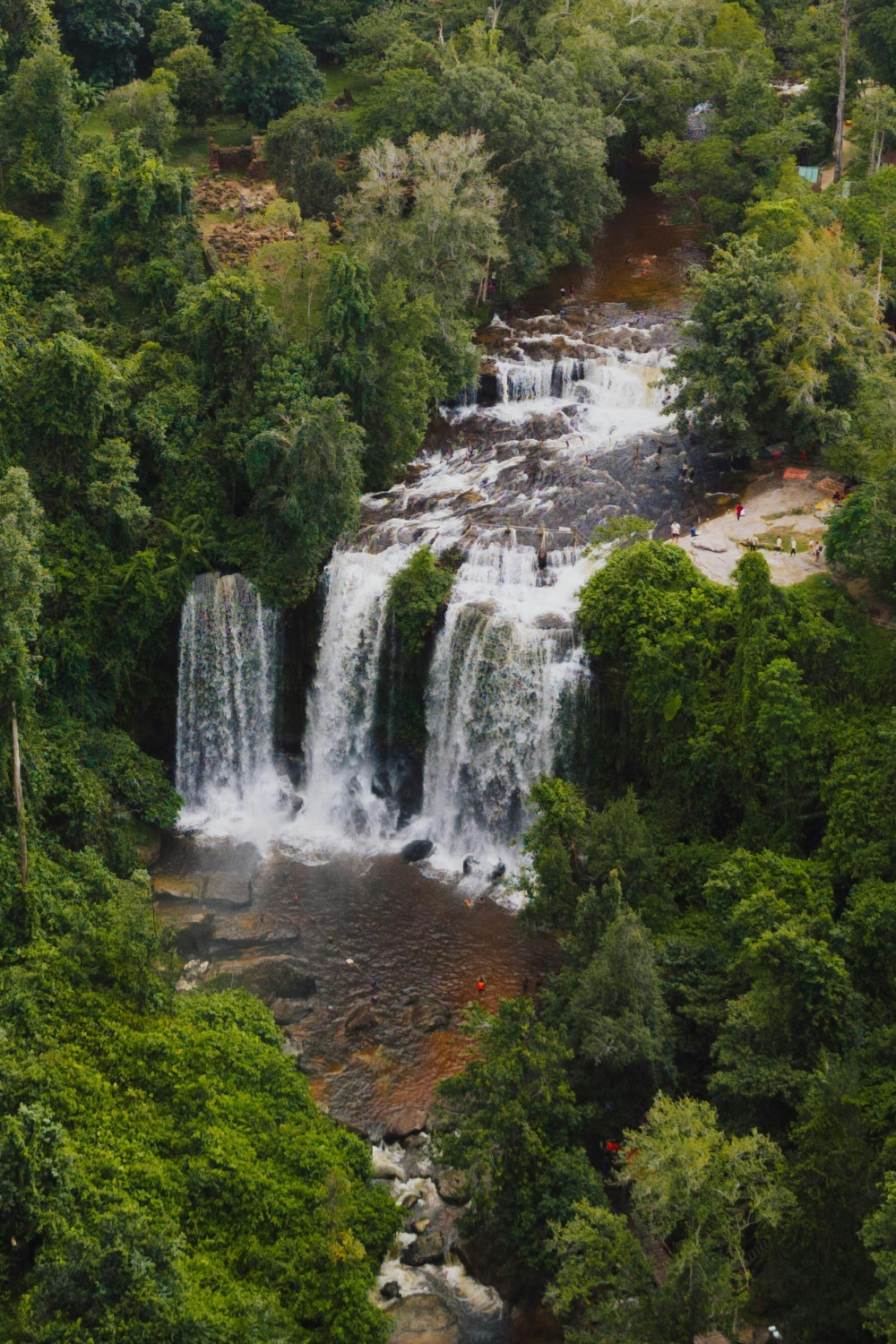
Bou Sra Waterfall stands as Mondulkiri’s most spectacular natural attraction, cascading 40 meters down granite cliffs into pristine pools surrounded by tropical forest. This three-tiered waterfall creates a natural amphitheater where the sound of crashing water echoes through the jungle canopy.
Multi-Level Natural Wonder
The waterfall consists of three distinct tiers, each offering unique perspectives and experiences. The upper level provides panoramic views of the surrounding forest, while the middle tier offers the most dramatic photographic opportunities with its powerful cascade and misty spray.
The lower level features natural swimming pools with refreshingly cool water that provides perfect relief from jungle trekking. During the dry season, the pools become more accessible and ideal for swimming, while the wet season transforms the falls into a thundering torrent that demonstrates nature’s raw power.
Wildlife and Forest Exploration
The area surrounding Bou Sra serves as habitat for diverse wildlife including various bird species, butterflies, and small mammals. Early morning visits often reward patient observers with wildlife sightings and the magical experience of mist rising from the forest floor.
Well-maintained trails wind through the forest, leading to different viewpoints and allowing visitors to experience the waterfall from multiple angles. The forest canopy provides natural shade and keeps temperatures comfortable even during midday visits.
Distance from Sen Monorom: 43 kilometers
Entry fee: $2 USD
Best time: Year-round, most impressive during rainy season
Activities: Swimming, hiking, photography, wildlife observation
2. Elephant Valley Project – Ethical Wildlife Encounter
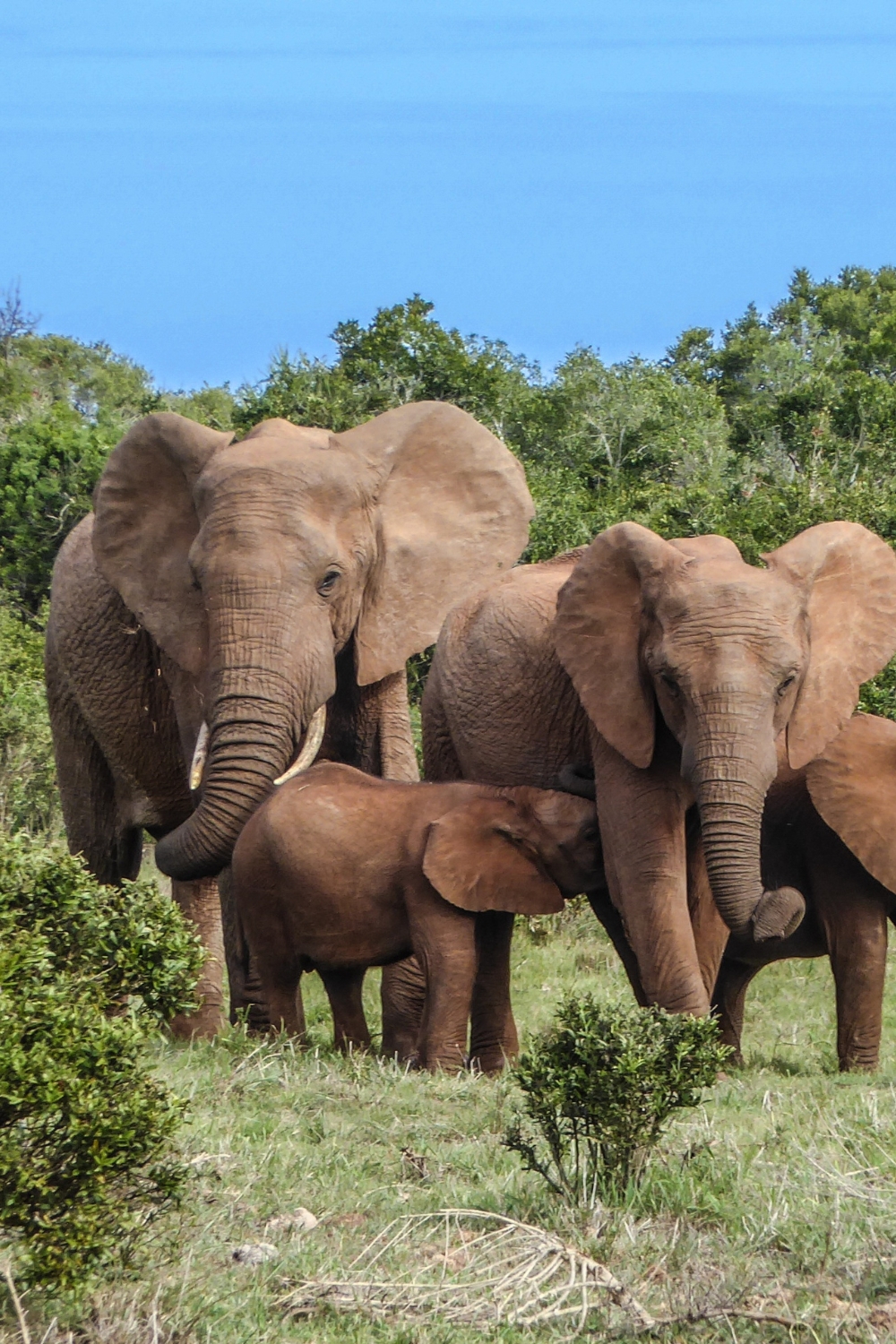
The Elephant Valley Project represents one of Southeast Asia’s most successful elephant conservation initiatives, providing a sanctuary for rescued elephants while offering visitors meaningful wildlife encounters. This ethical tourism project demonstrates how responsible travel can support wildlife conservation.
Conservation Mission and Impact
The project rescues elephants from logging operations, tourist rides, and other exploitative situations, providing them with freedom to roam across 1,500 hectares of protected forest. Visitors can observe these magnificent creatures in semi-natural conditions while learning about elephant behavior and conservation challenges.
The sanctuary currently houses multiple elephants, each with unique personalities and stories. Experienced guides share detailed information about each elephant’s background, behavior patterns, and the broader context of elephant conservation in Cambodia.
Educational Experience and Wildlife Observation
Visitors follow elephants through their natural habitat, observing feeding behaviors, social interactions, and daily routines without direct contact or riding. This approach provides authentic wildlife experiences while respecting animal welfare and natural behaviors.
The project includes educational presentations about elephant intelligence, conservation challenges, and the role of ecotourism in wildlife protection. Overnight stays in eco-lodges allow for extended observation opportunities and deeper understanding of elephant behavior.
Location: 40 kilometers from Sen Monorom
Activities: Elephant observation, conservation education, eco-lodge stays
Duration: Half-day to multi-day programs
Booking: Advance reservation required
3. Yeak Laom Crater Lake – Ratanakiri’s Sacred Waters
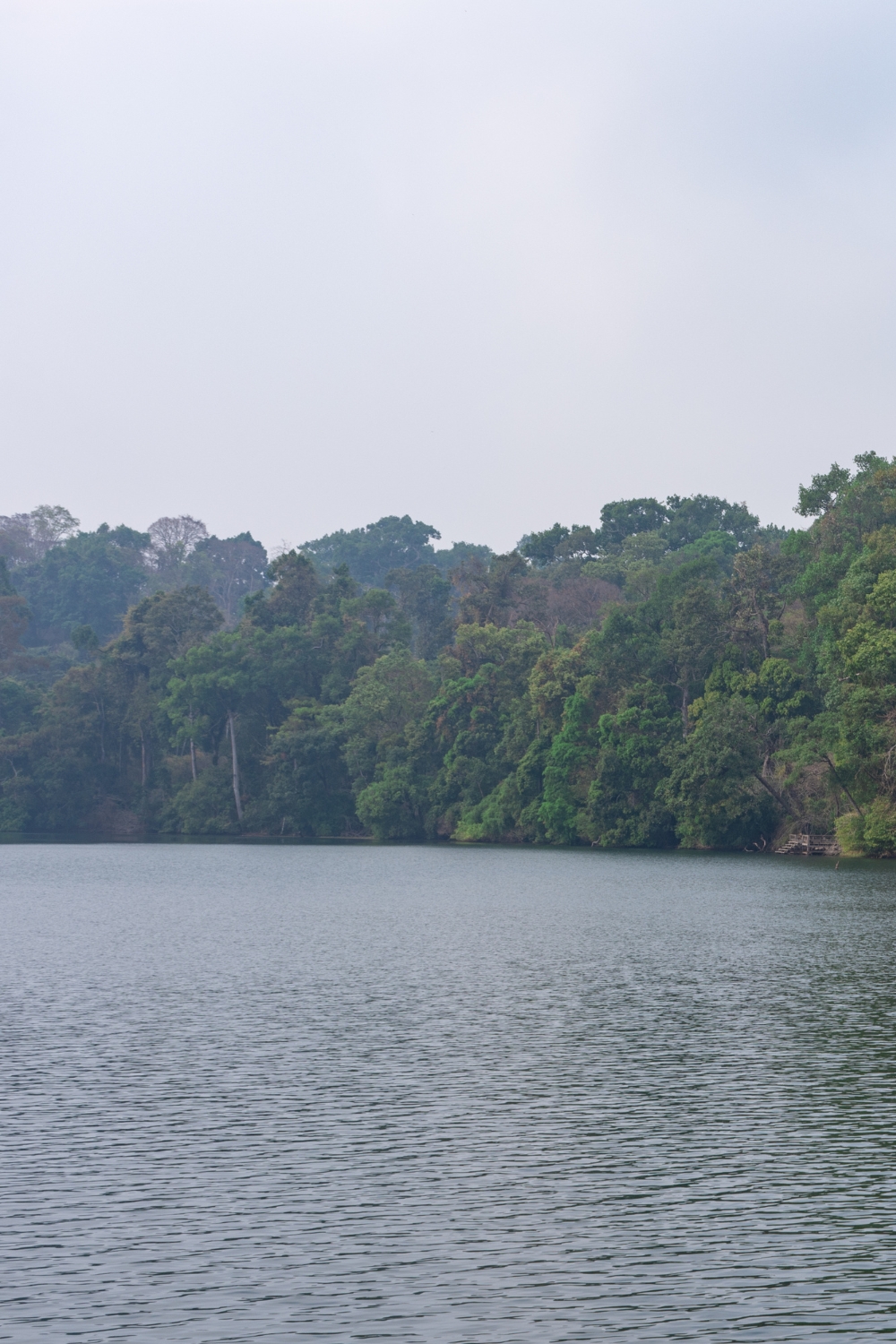
Yeak Laom Crater Lake captivates visitors with its perfectly round shape, crystal-clear waters, and spiritual significance to indigenous communities. This volcanic crater lake, formed approximately 700,000 years ago, creates one of Cambodia’s most pristine and mystical natural settings.
Geological Wonder and Natural Beauty
The lake spans 750 meters in diameter and reaches depths of 48 meters, creating a perfect circular mirror that reflects the surrounding forest canopy. The water maintains exceptional clarity due to its volcanic origins and protected status, allowing visibility to considerable depths.
The crater rim rises above the water surface, creating a natural amphitheater surrounded by dense tropical forest. This geological formation provides excellent viewpoints for photography and meditation, while the consistent water temperature makes swimming comfortable year-round.
Cultural Significance and Indigenous Heritage
Local Tampuan people consider Yeak Laom sacred and have protected its waters for generations. According to traditional beliefs, the lake houses protective spirits that watch over the surrounding communities and forest ecosystems.
The site includes a small museum that explains the lake’s geological formation and cultural significance. Traditional ceremonies still occur at the lake, and visitors can learn about indigenous cosmology and the deep spiritual connections between local communities and natural environments.
Distance from Ban Lung: 5 kilometers
Entry fee: $3 USD
Activities: Swimming, hiking, cultural learning, meditation
Cultural significance: Sacred site for Tampuan people
4. Seima Protected Forest – Biodiversity Hotspot
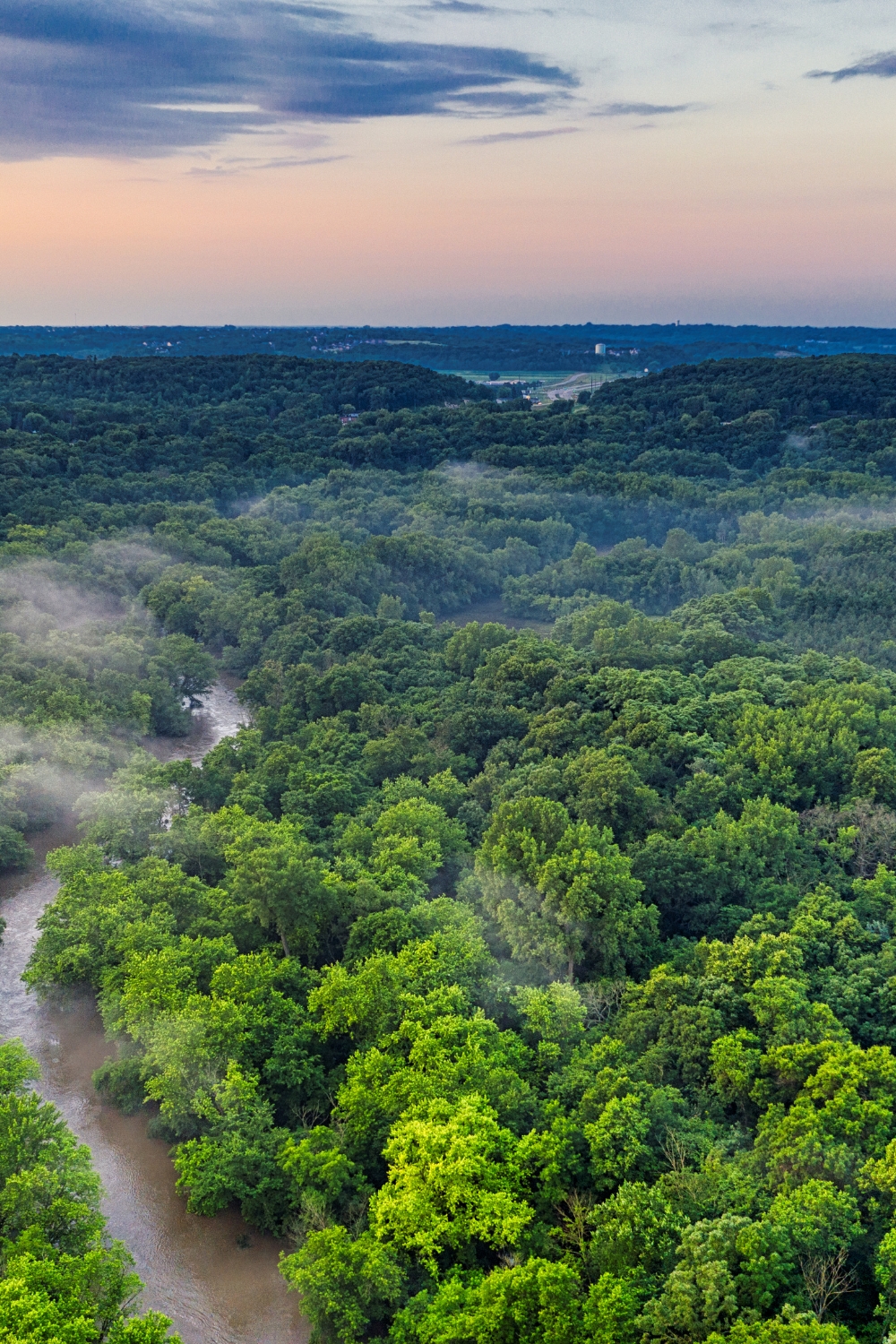
Seima Protected Forest encompasses 2,927 square kilometers of pristine wilderness that harbors some of Cambodia’s most endangered species. This biodiversity hotspot offers serious nature enthusiasts opportunities for wildlife observation, research participation, and deep forest exploration.
Endemic Species and Wildlife Conservation
The forest serves as critical habitat for numerous endangered species including Asian elephants, tigers, leopards, and over 400 bird species. The area supports one of Cambodia’s largest elephant populations and serves as an important corridor connecting protected areas across the region.
Guided wildlife tours led by trained local guides provide opportunities to observe rare species while supporting community-based conservation efforts. The forest’s pristine condition allows for authentic wildlife encounters that become increasingly rare across Southeast Asia.
Research and Eco-Tourism Opportunities
The forest serves as a living laboratory for international conservation research, and visitors can participate in citizen science projects including wildlife monitoring and forest health assessments. These programs provide meaningful ways to contribute to conservation while gaining deep insights into tropical forest ecosystems.
Multi-day trekking programs allow for extended forest exploration and camping under pristine night skies. The forest’s remote location and minimal human impact create opportunities for truly wild experiences that connect visitors with untouched natural environments.
Location: Mondulkiri Province
Area: 2,927 square kilometers
Activities: Wildlife observation, research participation, multi-day trekking
Best for: Serious nature enthusiasts, conservation supporters
5. Virachey National Park – Untamed Wilderness
Virachey National Park represents one of Cambodia’s largest and most pristine wilderness areas, covering 3,325 square kilometers of untouched forest, rivers, and mountains. This park offers adventurous travelers access to some of Southeast Asia’s most remote and biodiverse ecosystems.
Pristine Ecosystems and Biodiversity
The park encompasses multiple habitat types including lowland rainforest, montane forest, and grassland ecosystems that support exceptional biodiversity. Over 100 mammal species call the park home, including endangered species like Asian elephants, tigers, and various primate species.
The park’s remote location and minimal human impact have preserved ecosystems that have disappeared elsewhere in the region. Rivers run crystal clear, old-growth forests tower overhead, and wildlife populations remain largely undisturbed by human activities.
Adventure Trekking and Exploration
Multi-day trekking programs range from 2-8 days and traverse different ecosystems while following ancient trails used by indigenous communities. These expeditions require good physical fitness but reward adventurous travelers with experiences that few people ever encounter.
River crossings, jungle camping, and wildlife tracking create authentic adventure experiences under the guidance of experienced local guides. The park’s challenging terrain and remote location attract serious adventurers seeking genuine wilderness experiences.
Location: Ratanakiri Province
Area: 3,325 square kilometers
Activities: Multi-day trekking, wildlife observation, river exploration
Difficulty: Challenging to very challenging
6. Dak Dam Waterfall – Hidden Forest Cascade
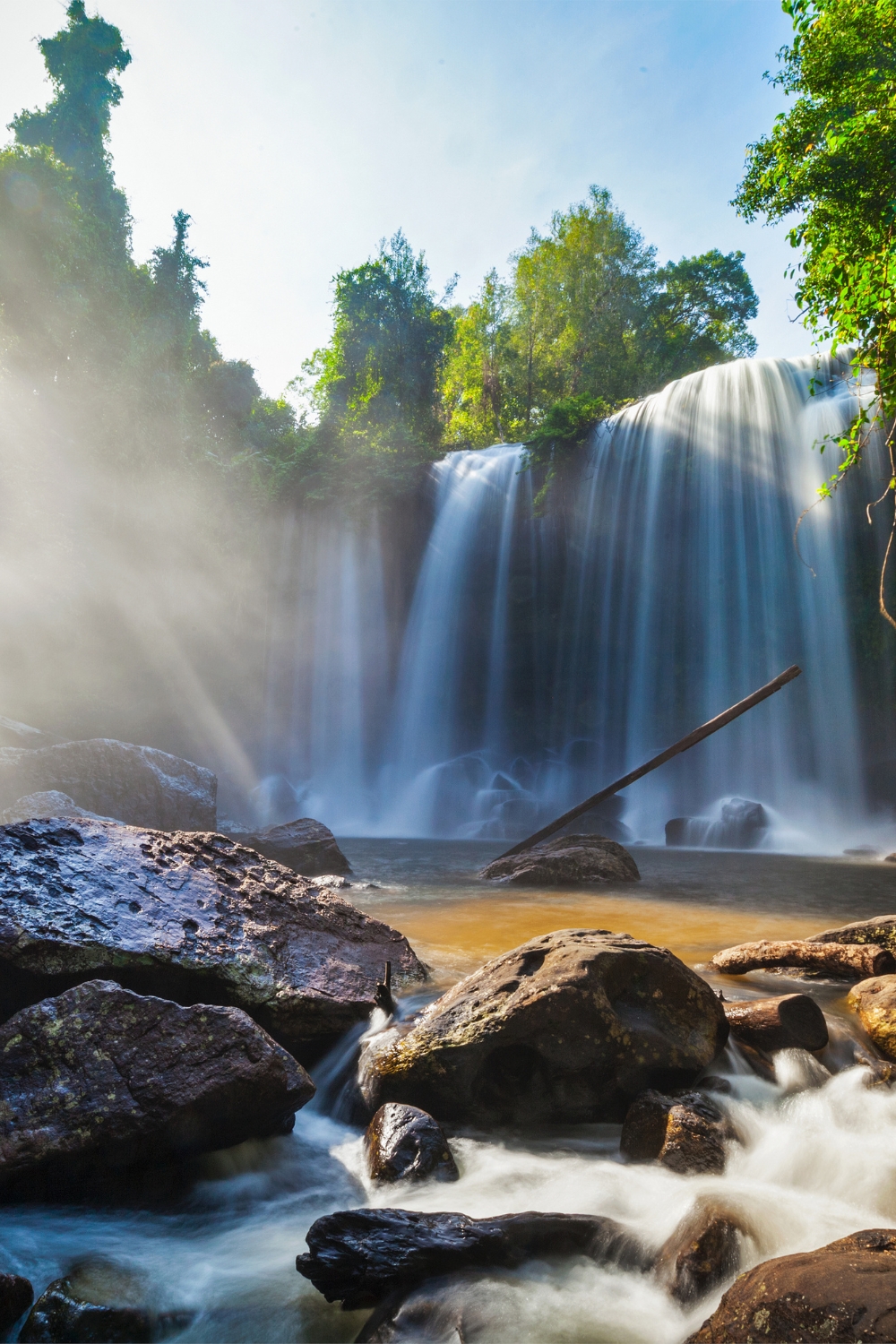
Dak Dam Waterfall remains one of Mondulkiri’s most secluded and pristine natural attractions, requiring a moderate hike through dense forest to reach its spectacular multi-tiered cascade. This hidden gem rewards adventurous visitors with unspoiled natural beauty and excellent swimming opportunities.
Secluded Natural Beauty
The waterfall tumbles approximately 30 meters over multiple rock formations, creating natural pools and swimming holes at different levels. The secluded location ensures minimal crowds and a peaceful atmosphere where the only sounds are falling water and forest wildlife.
The surrounding forest provides a cathedral-like setting with towering trees creating natural shade and a sense of ancient wilderness. Various viewpoints along the trail offer different perspectives on the waterfall and surrounding landscape.
Forest Trekking and Wildlife Observation
The 30-minute hike to reach the waterfall winds through pristine forest that showcases the region’s biodiversity. The trail crosses small streams and passes through different forest zones, providing opportunities for bird watching and plant identification.
Local guides can identify medicinal plants, animal tracks, and bird calls along the trail, transforming the hike into an educational nature experience. The forest’s pristine condition supports diverse wildlife populations that remain largely undisturbed by human activity.
Distance from Sen Monorom: 25 kilometers
Hiking time: 30 minutes each way
Activities: Swimming, hiking, photography, wildlife observation
Difficulty: Moderate
7. Bunong Villages – Indigenous Culture Experience
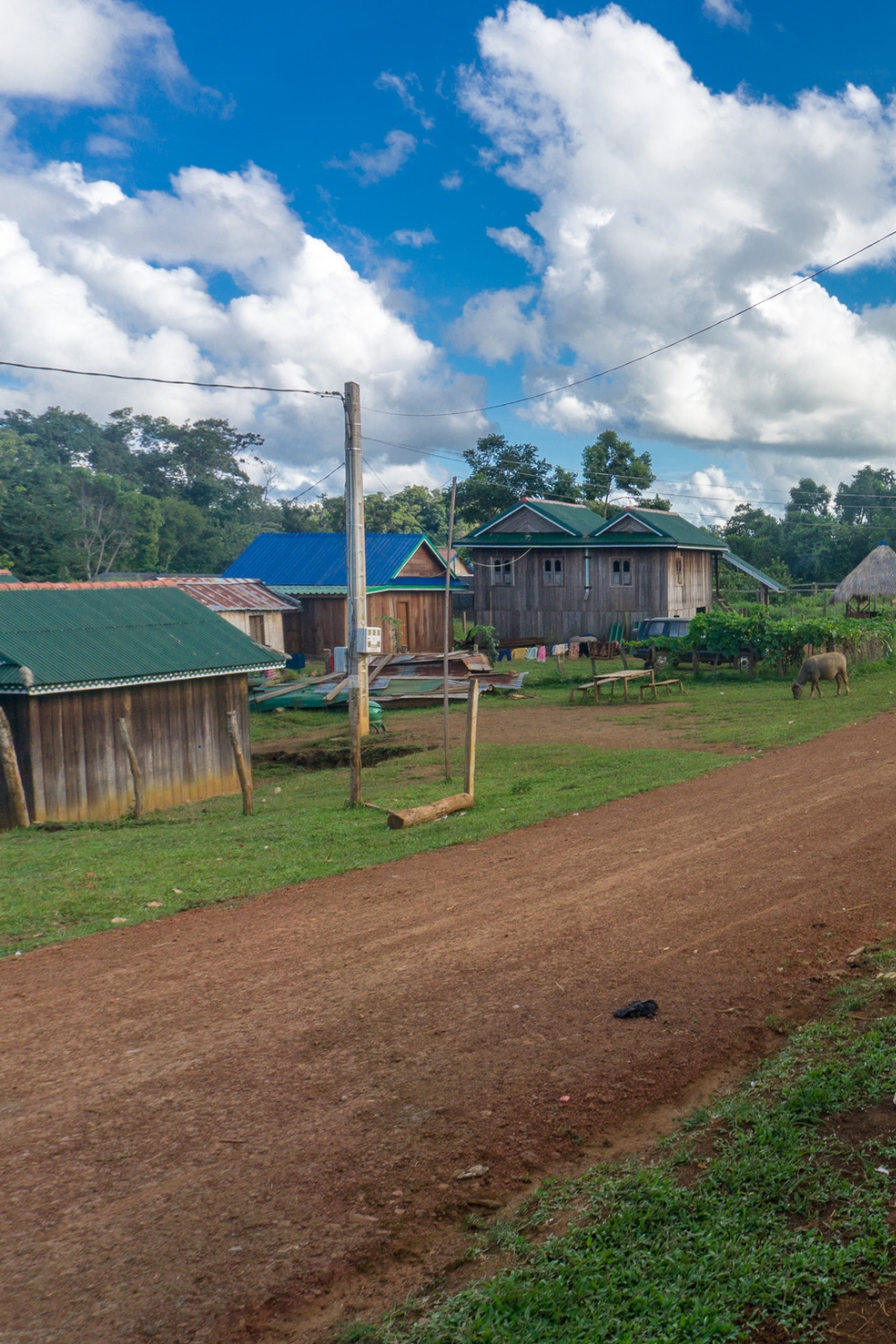
Traditional Bunong villages scattered throughout Mondulkiri offer visitors authentic insights into indigenous highland culture that has remained largely unchanged for centuries. These communities maintain traditional lifestyles, spiritual practices, and sustainable relationships with forest ecosystems.
Traditional Lifestyle and Cultural Practices
Bunong communities practice traditional agriculture including rice cultivation, fruit growing, and forest product harvesting using methods passed down through generations. Visitors can observe traditional weaving, basketry, and other crafts that reflect deep cultural knowledge and artistic traditions.
Community leaders share stories about traditional governance systems, spiritual beliefs, and the cultural significance of elephants in Bunong society. These interactions provide rare opportunities to learn about indigenous perspectives on human-nature relationships and sustainable living practices.
Sustainable Tourism and Cultural Exchange
Community-based tourism programs allow visitors to stay in traditional homes, participate in daily activities, and contribute directly to local economies. These programs respect cultural boundaries while providing meaningful cultural exchange opportunities.
Traditional ceremonies, if occurring during visits, offer glimpses into spiritual practices and community celebrations. Visitors learn about traditional medicine, forest conservation practices, and the role of oral traditions in preserving cultural knowledge.
Location: Various villages throughout Mondulkiri
Activities: Cultural immersion, traditional craft learning, homestays
Best approach: Through organized community-based tourism programs
Cultural sensitivity: Respect for local customs essential
8. Lomkod Lake – Pristine Mountain Waters
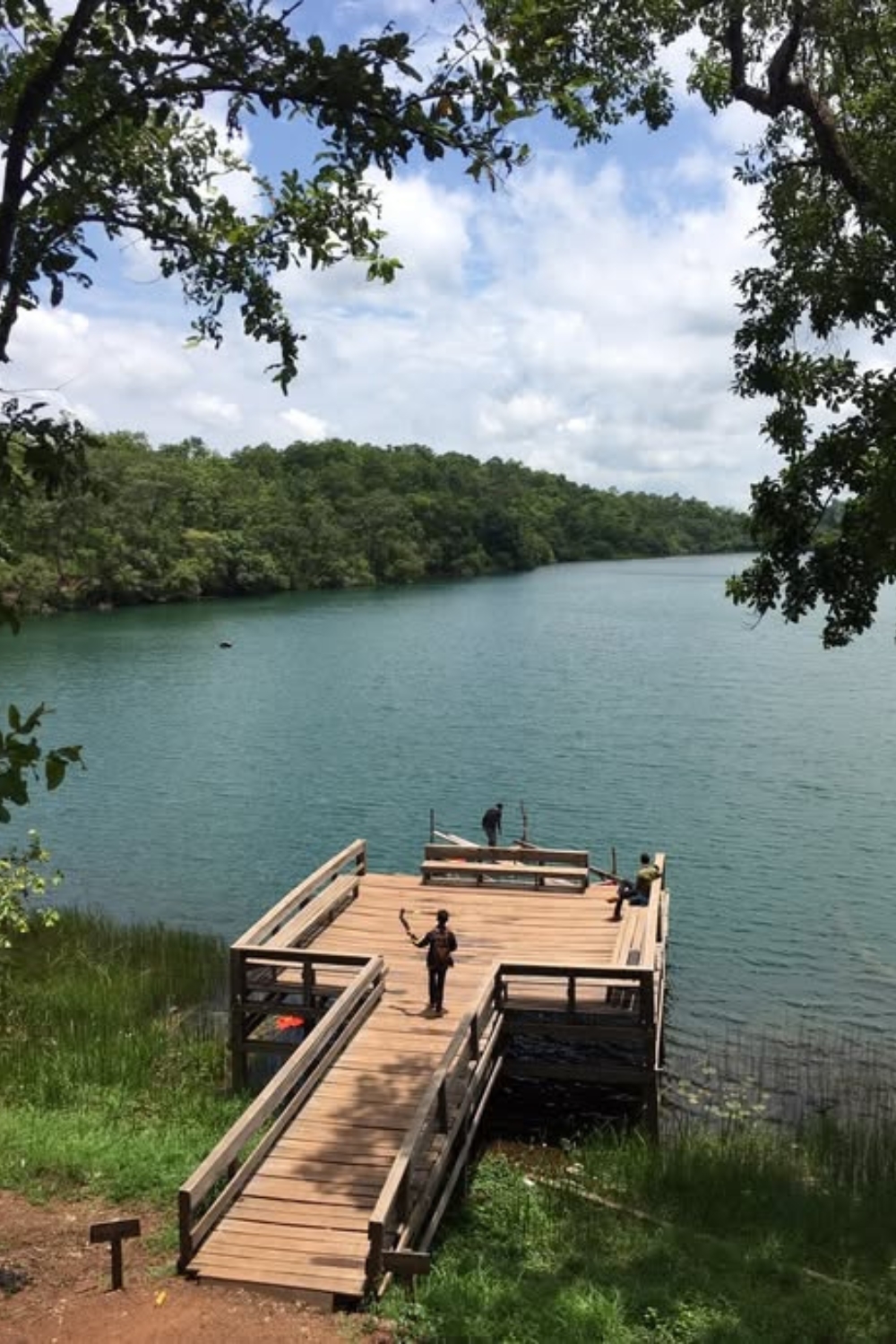
Lomkod Lake offers a serene mountain lake experience surrounded by rolling hills and pine forests that create landscapes unlike anywhere else in Cambodia. This scenic lake provides peaceful recreation opportunities and stunning natural beauty in a cool highland setting.
Scenic Beauty and Recreation
The lake stretches across several acres of mountain valley, creating mirror-like reflections of surrounding hills and sky. The cool climate and peaceful atmosphere make it an ideal destination for relaxation and contemplation away from tropical heat.
Small boats available for rent allow visitors to explore the lake’s quiet coves and observe aquatic wildlife. The lake supports various fish species and serves as habitat for water birds that migrate through the region.
Highland Landscapes and Photography
The area surrounding Lomkod Lake features rolling hills, pine forests, and grasslands that create photogenic landscapes throughout the day. Golden hour lighting transforms the lake into a magical setting with warm reflections and dramatic shadows.
Walking trails around the lake provide different viewpoints and access to picnic areas where visitors can enjoy meals with spectacular natural backdrops. The highland setting offers cooler temperatures and fresh mountain air that provide relief from Cambodia’s typical tropical climate.
Distance from Sen Monorom: 12 kilometers
Activities: Boating, fishing, hiking, photography, picnicking
Best time: Early morning and late afternoon for optimal lighting
Climate: Cool mountain weather year-round
9. Kaeng Plerng Waterfall – Ratanakiri’s Power
Kaeng Plerng Waterfall demonstrates nature’s raw power as it thunders over rocky cliffs into deep pools surrounded by pristine forest. This impressive waterfall offers both spectacular views and challenging access that rewards adventurous visitors with unforgettable experiences.
Powerful Natural Display
The waterfall plunges dramatically over granite cliffs, creating a thunderous roar that echoes through the surrounding valley. During the rainy season, the falls become a torrential cascade that demonstrates the incredible power of moving water.
Multiple viewing platforms provide safe observation points where visitors can experience the waterfall’s power while staying protected from spray and slippery rocks. The mist created by the falling water supports unique plant communities and creates rainbow effects during sunny conditions.
Adventure Access and Forest Exploration
Reaching the waterfall requires a moderate hike through dense forest that adds adventure to the experience. The trail winds through different forest zones and crosses small streams, providing opportunities for wildlife observation and plant identification.
The forest surrounding the waterfall remains largely untouched and supports diverse wildlife populations. Bird watching opportunities abound, and patient observers may spot various forest mammals and reptiles along the trail.
Distance from Ban Lung: 37 kilometers
Hiking difficulty: Moderate
Activities: Photography, hiking, wildlife observation
Best season: Rainy season for maximum water flow
10. Eisey Patamak Mountain – Highland Adventure
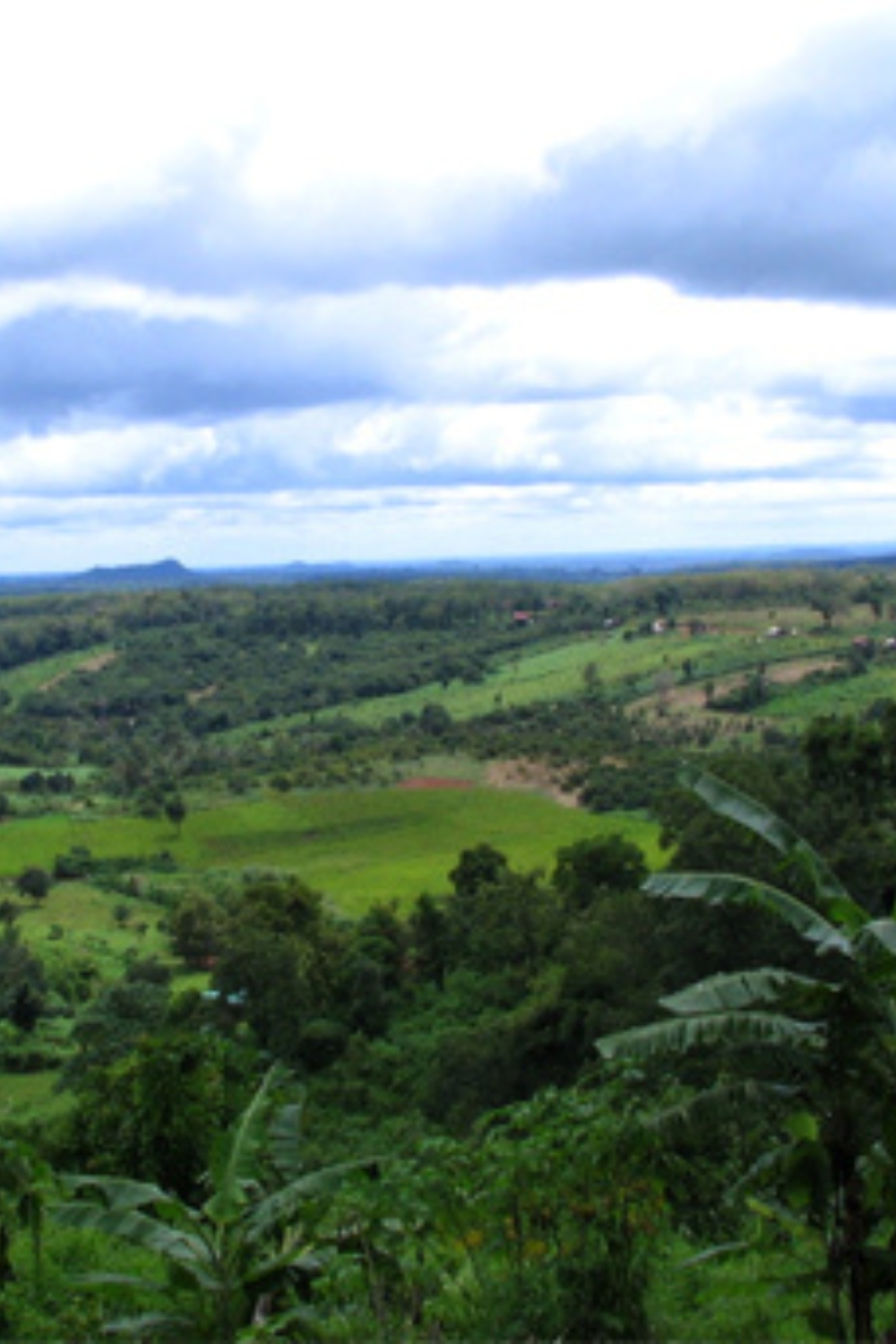
Eisey Patamak Mountain offers Mondulkiri’s most challenging hiking experience with rewarding panoramic views of the highland landscape. This mountain trek provides serious hikers with opportunities to reach one of the region’s highest peaks and experience pristine montane ecosystems.
Challenging Trek and Mountain Views
The hike to Eisey Patamak’s summit requires good physical fitness and takes most of a day to complete. The trail winds through different elevation zones, each supporting unique plant communities and providing increasingly spectacular views.
From the summit, panoramic views stretch across the highland plateau, revealing the full scope of Mondulkiri’s rolling landscape. On clear days, the views extend to neighboring provinces and showcase the dramatic topography of Cambodia’s northeastern mountains.
High-Altitude Ecosystems and Wildlife
The mountain supports montane forest ecosystems that differ significantly from lowland tropical forests. Unique plant species adapted to cooler temperatures and higher elevations create distinctive forest communities rarely seen elsewhere in Cambodia.
Wildlife populations at higher elevations include species specifically adapted to montane conditions. Bird watching opportunities are excellent, with various species that prefer highland habitats and cooler temperatures.
Location: Near Sen Monorom
Hiking time: Full day
Difficulty: Challenging
Activities: Mountain hiking, panoramic photography, ecosystem observation
Requirements: Good physical fitness, proper hiking gear
Planning Your Highland Adventure
Getting There and Transportation
Both provinces are accessible by road from Phnom Penh, with journeys taking 6-8 hours depending on road conditions. Buses run regularly to both Sen Monorom (Mondulkiri) and Ban Lung (Ratanakiri), while private transportation offers more flexibility for exploring remote locations.
Within the provinces, motorbikes provide the most practical transportation for reaching waterfalls, villages, and trailheads. Local guides often include transportation in their services and know the best routes to various destinations.
Best Time to Visit
Dry Season (November-April): Ideal for hiking and outdoor activities with comfortable temperatures and minimal rainfall. Roads are more accessible, and wildlife viewing is often better around water sources.
Rainy Season (May-October): Waterfalls are at their most impressive, and the landscape becomes lush and green. However, some roads may be challenging, and hiking can be more difficult due to muddy conditions.
Cultural Sensitivity and Responsible Tourism
Both provinces are home to indigenous communities with traditional lifestyles and spiritual practices. Visitors should respect local customs, ask permission before photographing people, and support community-based tourism initiatives when possible.
Environmental conservation is crucial in these pristine areas. Follow leave-no-trace principles, stick to established trails, and support conservation organizations working to protect these unique ecosystems.
Conclusion
Mondulkiri and Ratanakiri offer travelers authentic adventures in some of Southeast Asia’s most pristine wilderness areas. From thundering waterfalls and crater lakes to elephant sanctuaries and indigenous villages, these provinces provide experiences that connect visitors with both natural beauty and cultural heritage.
What makes these destinations truly special is their authenticity and unspoiled character. Here, you’ll find genuine wildlife encounters, meaningful cultural exchanges, and natural landscapes that remain largely unchanged by human development. The cool highland climate, diverse ecosystems, and welcoming communities create perfect conditions for adventure and discovery.
These ten destinations represent the diversity of experiences available in Cambodia’s northeastern highlands, but they’re just the beginning of what these remarkable provinces offer. Each waterfall, village, and mountain trail provides opportunities for personal discovery and connection with Cambodia’s wild heart.
Whether you’re seeking challenging mountain treks, peaceful lake reflections, ethical wildlife encounters, or cultural immersion with indigenous communities, Mondulkiri and Ratanakiri deliver experiences that will exceed your expectations. The journey to these remote provinces requires effort and planning, but the rewards include some of Southeast Asia’s most authentic and unforgettable travel experiences.
Start planning your highland adventure today, and prepare to discover why Cambodia’s northeastern provinces are becoming recognized as essential destinations for travelers seeking genuine wilderness experiences and cultural authenticity in Southeast Asia.
